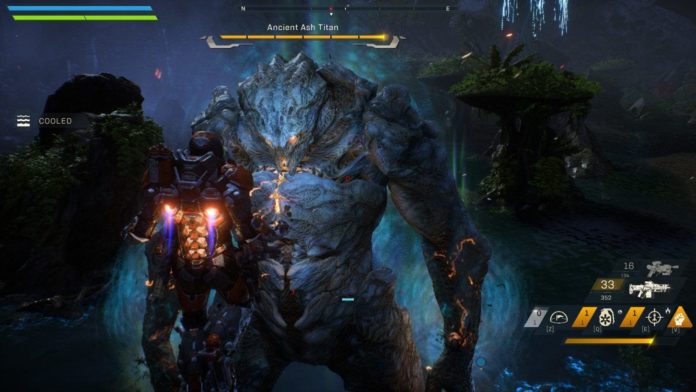BioWare’s next big title, Anthem, a supposed Destiny clone is set to release in the next couple of days. Users with Origin Premier already have access to the game, and we happen to be one of them. For starters, I can say with certainty that Anthem is a decently optimized game on PC and even the last-gen Pascal flagship should be enough to run the game at a mixed high-ultra preset 4K while the 1080/1070 Ti should do the trick at 1440p.
Testbench
- CPU: Intel Core i7-7700K
- GPU: NVIDIA GeForce RTX 2080 FE
- Memory: HyperX 16 GB DDR4 RAM @ 2400MHz
- HDD:WD Black 4TB
Anthem PC Graphics Options Explained


As of now, the graphics menu is the same as the beta version’s with all the standard quality options, along with a resolution slider, screen-mode, and v-sync setting. Anti-aliasing comes in two flavors- temporal AA or TAA and an ultra option which seems like a custom AA filter. Then there’s ambient occlusion, where you have the standard SSAO option, along with half and full-res versions of NVIDIA’s HBAO algorithm. The rest of the options pretty much consist of the traditional low to ultra quality presets.
It’s important to note that although the performance of the game is a tad bit better than the beta, there are still only less than a handful of options that actually have a meaningful impact on performance.

The first is anti-aliasing (TAA is quite effective at lower resolutions but at 4K, turn it off). Ambient Occlusion, when set to HBAO Full, is also quite a performance hog, and unless you own the top of the line Turing cards, I’d suggest setting it to SSAO. Other than these two, the lighting quality and post-processing options have a significant impact on the frame rates. It’s best to set the latter to medium, and if you still aren’t getting reasonable FPS, then consider dropping post-processing down to low, that should yield quite a few frames.
AMD Claims Support for Real-Time Ray Tracing on all of its DX12 GPUs
Anthem PC 1440p and 4K Performance
| Quality | Low | Medium | High | Ultra |
| 1440p | 112 | 90 | 85 | 79 |
| 2160p | 65 | 60 | 52 | 48 |
As you can see, the drop from ultra to high doesn’t really get you much of a boost, while going from high to medium grants a sizeable chunk of frames. At 1440p, there seems to be a CPU bottleneck making the deltas a bit slimmer compared to 4K, but the frame rates are well above the 60 FPS mark. It’s best if you stick to reducing the select few settings mentioned in the above section as that way you can get the best performance without really sacrificing much visual quality.

Our Recommendations
| Quality | Low | Medium | High | Ultra |
| 1080p | GTX 1050 Ti | GTX 1060 | GTX 1070 | GeForce RTX 2060/GTX 1070Ti |
| 1440 | GeForce RTX 2060/GTX 1070Ti | GeForce RTX 2060/GTX 1070Ti | GeForce RTX 2070 | GeForce RTX 2080/GTX 1080Ti |
| 2160p | RTX 2080/GTX 1080Ti | RTX 2080/GTX 1080Ti | RTX 2080/GTX 1080Ti | GeForce RTX 2080 Ti |
I’d say these recommendations aren’t anything to scoff at but Anthem looks absolutely gorgeous so it’s more than justified. At the moment, NVIDIA’s DLSS or raytracing tech hasn’t been patched in, but since it’s a green sponsored title, expect support for at least the former soon enough.
We’ll leave you with some shots comparing the four graphics quality presets of Anthem. The core differences are with regard to the lighting, shadows and a bit of texture complexity loss at the lowest preset. Click on the image to see the higher resolution version.
Further reading:






